




官方网站:https://zhcs.city

A wisp delicate tea fragrance lingering from the southwestern border of China, has traveled through thousands of years of history and drifted onto the world stage.

On September 17th, at the 45th session of the UNESCO World Heritage Committee held in Riyadh, Saudi Arabia, the "Cultural Landscape of Old Tea Forests of Jingmai Mountain in Pu'er" was successfully inscribed on the UNESCO World Heritage List, making it China's 57th World Heritage site and the 6th in Yunnan Province.

How did the "Cultural Landscape of Old Tea Forests of Jingmai Mountain in Pu'er" become the world's first tea-themed world cultural heritage? Nine keywords unveil the vast ancient tea forests spanning thousands of acres.

“普洱景迈山古茶林文化景观”何以成为全球首个茶主题世界文化遗产?9组关键词揭开这片千年万亩古茶林的面纱。
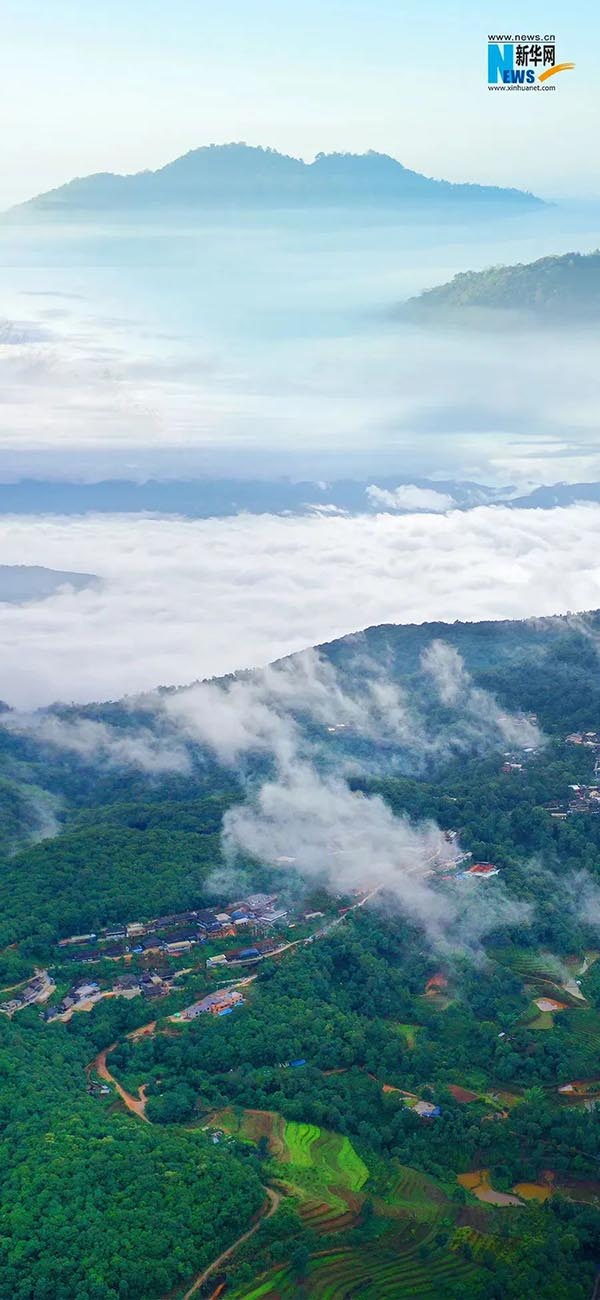
Keyword 1: Cultural Landscape of Old Tea Forests
On Jingmai Mountain, the intertwining scenery of ancient tea trees and pristine forests creates a vibrant cultural landscape, which has been protected and developed for centuries, and formed harmonious coexistences between forest and tea, human and nature. The heritage elements in the application consist of five large-scale, well-preserved old tea forests, nine traditional villages within them, and three protective-partition forests between them.

在景迈山上,古老的茶树与原始森林交错出一片生机,历经千年的保护与发展,形成了林茶共生、人地和谐的古茶林文化景观。5片完整的古茶林,古茶林中的9个传统村落,以及古茶林之间的3片分隔防护森林,是此次申遗的遗产要素。

Keyword 2: Vast Old Tea Forests
As one gazes upon Jingmai Mountain, the expanse of ancient tea trees stretches endlessly. The forest has over 3.2 million ancient tea trees and covers 28,000 mu, making it the world's largest cultivated tea forest.

景迈山上,一眼望不到头的便是那漫山的古茶树。这里有2.8万亩古茶林,古茶树320余万株,是全世界发现面积最大、保存最完好、年代最久远的人工栽培型古茶林。
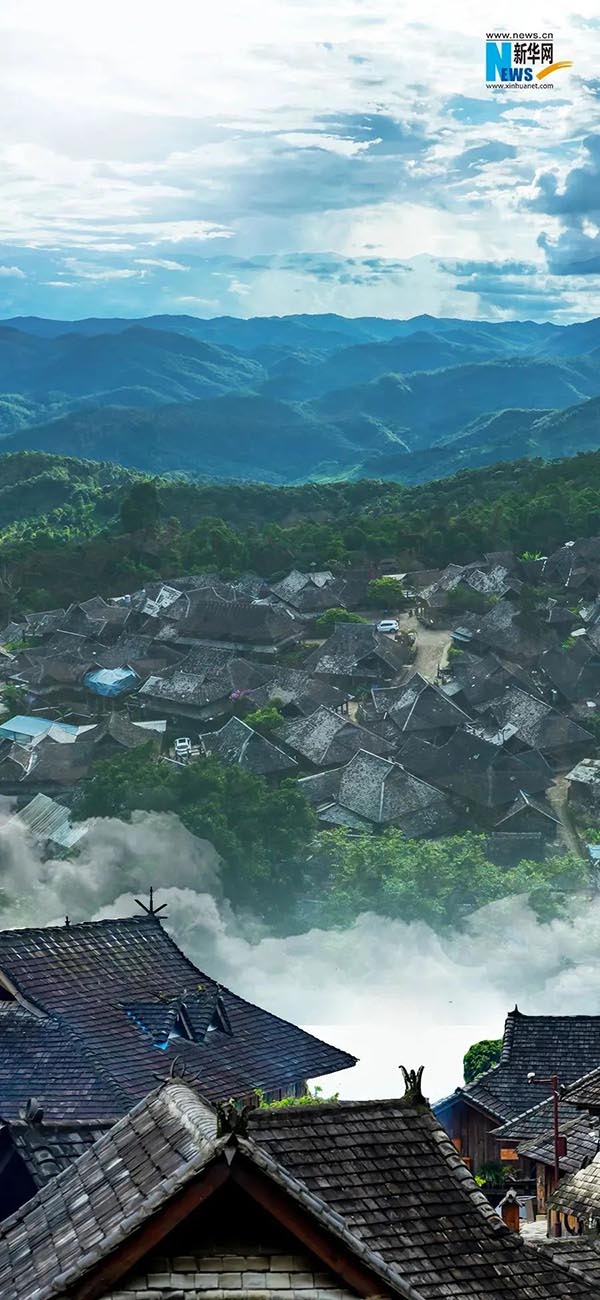
Keyword 3: Under-story Growing Technique of Tea
The indigenous peoples of Jingmai Mountain have developed the technique of "under-story growing tea" within the primal forest system. That is to create ideal light conditions for the growing of tea trees through limited under-story cultivation while preventing insect hazards through the well-preserved forest ecosystem, so as to produce high-quality organic tea leaves without the use of pesticides and chemical fertilizers.

景迈山的世居民族在原始森林系统中探索出“林下茶种植”技术,即通过林下开垦,为茶树生长创造理想的光照条件,同时利用森林完好的生态系统,防止病虫害侵袭,不用农药和化肥即可生长出高质量的有机茶叶。

Keyword 4: Traditional Ancient Villages
The indigenous ancestors of Jingmai Mountain discovered wild tea trees during their migration and settled in the area. Within the declared heritage and buffer zones, there are a total of 15 villages primarily inhabited by the Dai and Blang ethnic groups. The rich and diverse ethnic cultures harmonize with the old tea forests, giving rise to a unique path of development.

景迈山世居民族先民在迁徙途中发现野生茶树,于是在景迈山定居。申报遗产区和缓冲区内共有15个村寨,这里的民族以傣族、布朗族等为主,丰富多彩的民族文化与这片古茶林相呼应,融合出了一条独特的发展之路。
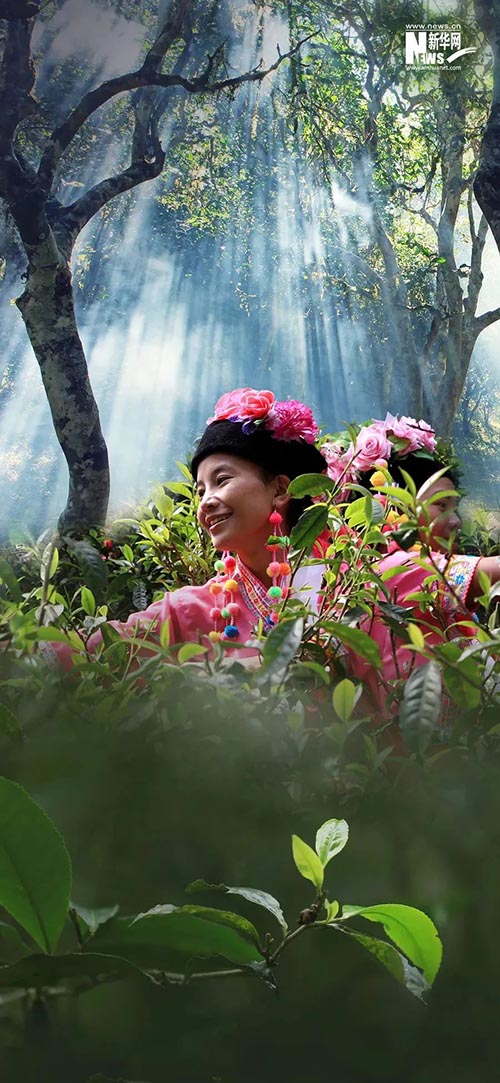
Keyword 5: Protection, Inheritance and Development
The traditional practice of tea plantation under-story growing technique effectively protects biodiversity. The residents here steadfastly adhere to a principle of protection alongside development. Regulations have been implemented to prohibit excessive tea leaf harvesting. The practice of tea harvesting has transitioned from all seasons to the spring and autumn only, encouraging the development of tea farmer cooperatives. Through the preservation and development efforts, this ancient tea mountain is being safeguarded while ensuring its legacy is passed down to future generations.

传统的林下茶种植方式有效地保护了生物多样性,这里的居民坚持着在发展中保护,出台条例规定居民不允许过度采摘茶叶。由原来的四季采茶变为一年只采春、秋两季,鼓励发展茶叶农民专业合作社……在传承与发展中保护着这座古茶山。
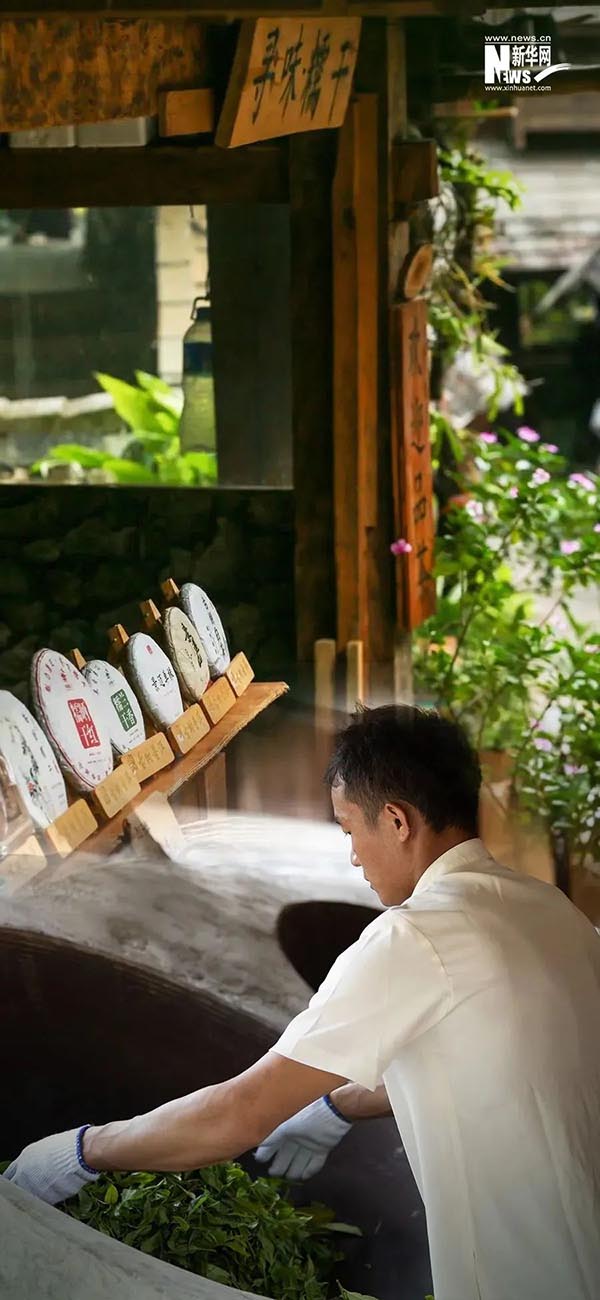
Keyword 6: Tea Culture
Jingmai Mountain lives up to its reputation as the "World Museum of Tea Culture, History, and Nature." The indigenous people of Jingmai Mountain collectively create and inherit tea culture. There's a strong bond between people, tea, and nature due to local tea culture, ecological village regulations, and customs of mutual respect and appreciation.

景迈山也从未辜负“世界茶文化历史自然博物馆”美誉,景迈山世居民族共同创造、传承茶文化,以“和”为核心的当地茶文化、保护生态的村规民约以及互敬互爱的风俗习惯,实现了人与茶、人与自然之间的高度联系。
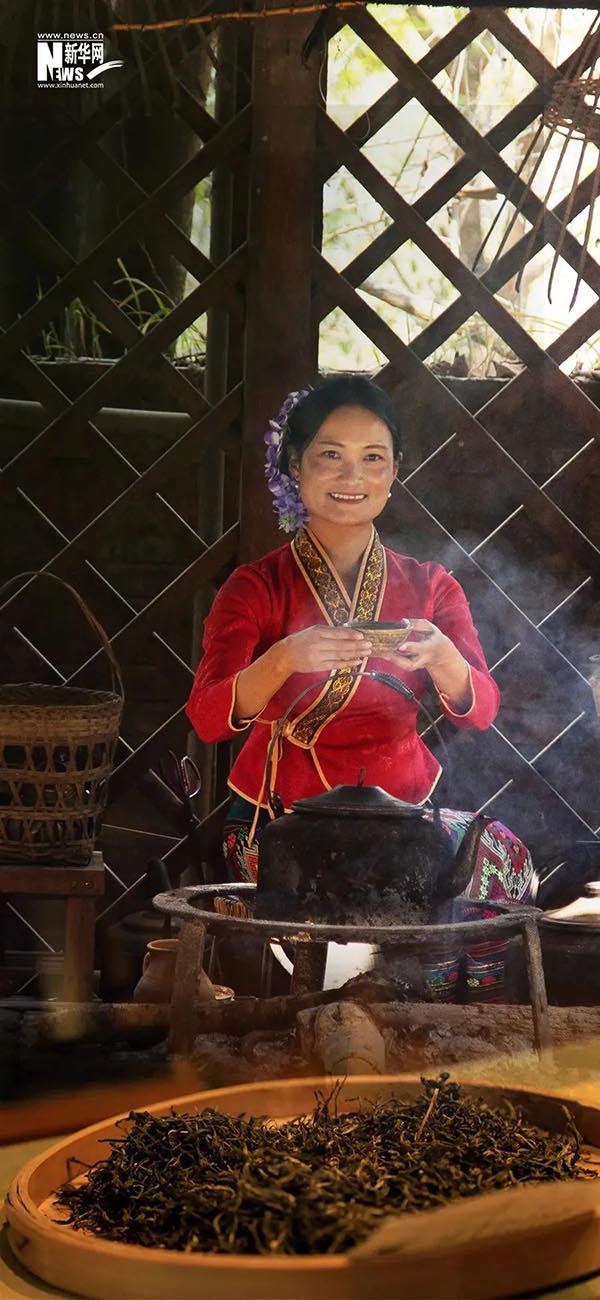
Keyword 7: Welcoming Tea
In the "Millennial Blang Village" of Wengji, there is a saying: no matter which household you enter, you can freely savor the local tea. In Nuogang Village, while preserving the traditional art of handcrafted tea, there has also been a quiet emergence of large-scale tea production. This serves as a microcosm of how Jingmai Mountain is defined by tea, with almost every household having their own tea workshop. Cultivating, harvesting, and processing tea have become a part of the villagers' daily lives.

“千年布朗古寨”翁基,有一个说法——无论你走进谁家,都可以免费品一品当地的茶叶。在糯岗,手工茶制作在传承的同时,批量化制茶也悄然兴起,这也是景迈山以茶示人的缩影,景迈山几乎家家户户都有自己的茶叶作坊;种茶、采茶、制茶成了村民的日常。
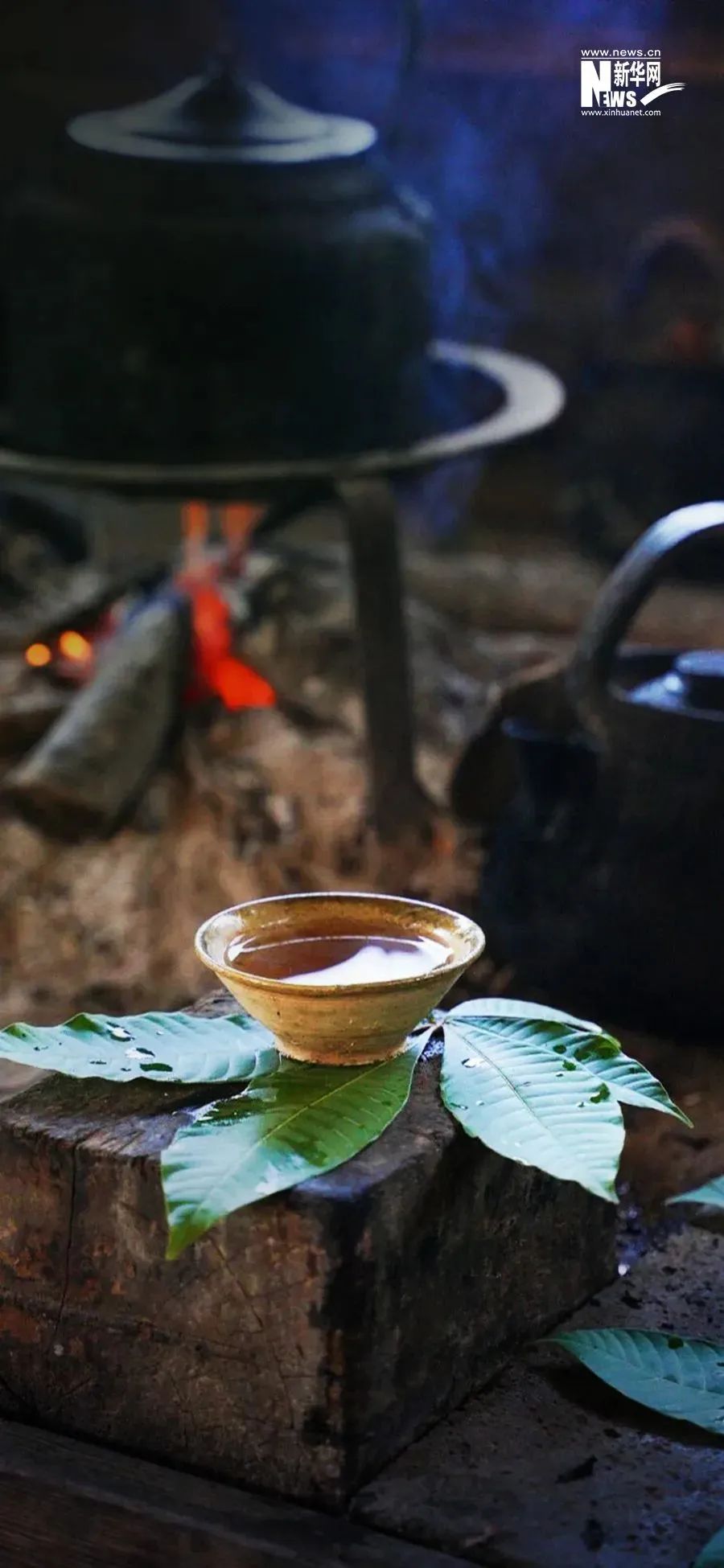
Keyword 8: Prosperous "Golden Leaves"
The people living on Jingmai Mountain thrive on tea, sing songs alongside tea, and dance because of tea. For generations, tea cultivation has been the primary industry for the Blang and Dai ethnic groups in this region. Nowadays, the tea industry has become their "golden key" to prosperity. Guiding the development of the tea industry is of utmost importance in protecting the heritage value of Jingmai Mountain.

景迈山上的群众依茶而生、伴茶而歌、因茶而舞,生活在这里的布朗族、傣族等世代以茶叶种植为主要产业,眼下茶产业已经变成他们勤劳致富的“金钥匙”,引导好茶产业发展,对保护景迈山遗产价值至关重要。

Keyword 9: Distant Mountains, Close Dwellings, Rising Smoke from Kitchens, and Tea Aroma
The successful inscription of the "Cultural Landscape of Old Tea Forests of Jingmai Mountain in Pu'er" fills the void in the world heritage that lacks cultural heritages centered around tea. Amidst the mountains, the traditional villages of ethnic minorities nestled beside the tea mountains. Distant mountains, close dwellings, rising smoke from kitchens, and tea aroma all tell the story of this ancient and vast tea forest spanning thousands of acres.

“普洱景迈山古茶林文化景观”申遗成功,填补了目前世界遗产中没有以茶为主题的文化遗产的空白。群山之间,茶林掩映下的少数民族传统村落依山而建、傍茶而居,远山、近舍、炊烟、茶香诉说着这片千年万亩古茶林的故事……

The Chinese character for tea, "茶," vividly illustrates ancestors' understanding of the relationship between humans, tea and nature. The refreshing aroma of tea on Jingmai Mountain speaks of the deep respect and love for nature among the Chinese people, confirming the unwavering pursuit of harmony between humans and nature by the Chinese nation.

<END>
Thanks for reading
来源:新华网、新华社
第一次接受赞赏,亲,看着给啊

便民信息
更多推荐阅读
